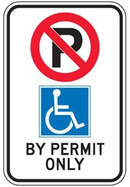HELPFUL HINTS

STAIRS - (Inside the Building)
- Ensure free from slip and trip hazards.
- Make stair edges more visible by using bright yellow coloured tape or non-skid paint to highlight edges.
- Use special lighting and warning signs to warn users of steep or irregular stairs.
- Ensure stairs are uniform – the rises should be the same height (7”)
and the tread should be the same width (11”). - Use handrails that are round with a circumference of 120mm.
- Keep free from slip and trip hazards such as water, uneven surfaces.
- Wash floors before opening in morning or after closing in evening.
- Keep aisles free of clutter (boxes, merchandise, produce).
- Keep exit routes free from obstructions.
- Use slip-resistant floors to prevent falls if water or snow is tracked in from outside.
- Provide handrails on any stairs or ramps coming into or in the building.
- Doors to a public entrance should open easily with one hand – even for a person with limited dexterity.
- Doors should have a wide entrance* (at least 81 cm) and should not have steps that could cause trips.
- Use hydraulic springs to make heavy doors easier to open. This is a cost effective alternative to installing automatic doors.
- Use non skid mats
- Keep mats flat, clean and free of water and snow, using a mop constantly in the winter. Take mats up at night and hang to dry.
- Provide seating that is a minimum of 18 inches from the ground and have arm rests.
- Disabled parking space at least 12 ‘ wide and marked with a vertical sign.
- Remove snow rather than ploughing it into piles that block pedestrian travel.
- Provide adequate drainage where salt is used to melt snow, to prevent water from accumulating, freezing and creating a hazard.
- Ensure that all pedestrian routes are clearly marked and all obstacles are brightly coloured.
- Seniors need twice the illumination.
- Shiny floors can cause difficulties with depth perception.
- Braille signs inside of a building enable blind individuals to safely find their way around the building.
- The blind need touchable cues to warn of the presence of a staircase and the ending of a staircase.
- Locate washrooms so they are convenient, accessible and well-marked.
- Install round, slip-resistant handrails for wheel chair transfers.
- Locate hand towels near sinks to reduce the amount of water on the floor.
- Use slip resistant flooring.
- Secure shelves and racks so they cannot be moved or tipped when leaned against or grasped.
- Place heavier products on lower shelves.
- Keep floors cleared of clothes hangers and racks with protruding legs.
Information provided by: STEPS Project, Victoria BC, Safe Stores: "Stores Blitz", North Bay, ON, and the 2002 Canadian Standards Association (www.csa.ca), Toronto, ON